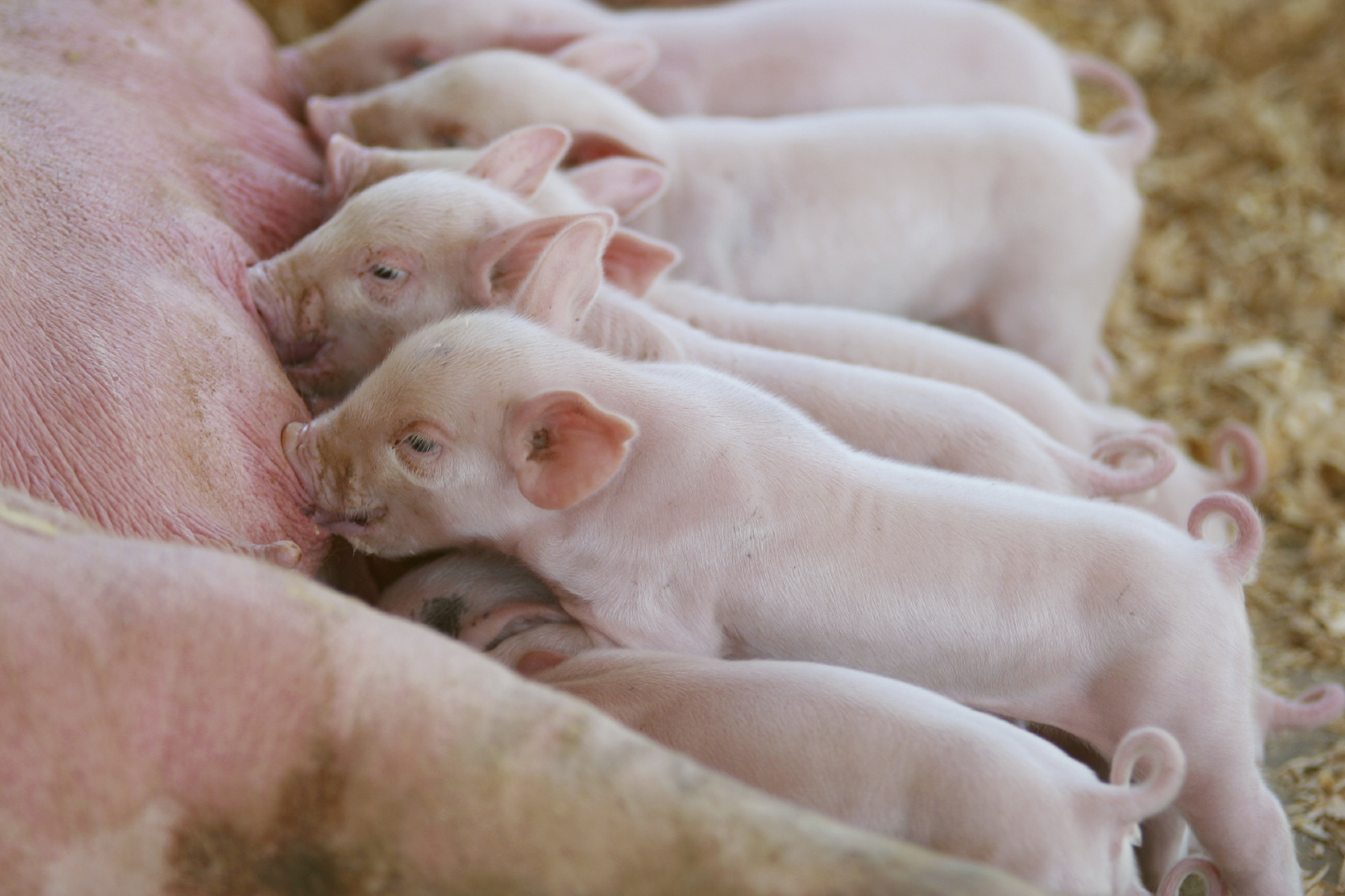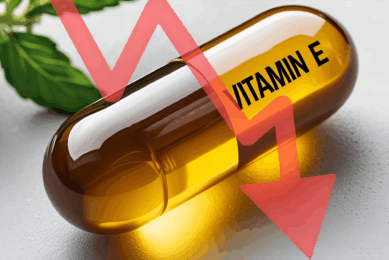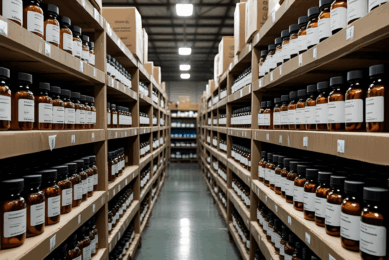Polyphenols: Anti-oxidant alternative for vitamin E

Vitamin E is an effective anti-oxidant and helps to protect against ageing and disease. It is also expensive especially when considering that 7/8th of synthetic vitamin E consists of isomers with limited bioactivity. In order to fight oxidative stress, polyphenols selected for good bio-availability come to light as good alternatives.
By Nutreco
The production of free radicals is an everyday event in metabolism. Notably during energy production large amounts of superoxide, hydrogen peroxide, and hydroxyl radicals are formed. These free radicals, because of their reactivity, can attack cell membranes, DNA and proteins. Cell membranes can lose their fluidity affecting nutrient transport. DNA can be altered or broken which leads to translational errors. Proteins can lose their structure and ability to catalyse reactions.
Oxidative stress
The production of free radicals is affected by the health status of an animal, by growth rate, and by the diet. During health challenge, the immune system uses free radicals to kill invading bacteria or viruses. Some of these free radicals escape, though, from the immune system and will have to be cleaned up which is why oxidative stress is increased during a health challenge. As to high productivity, a high rate of growth means a high metabolic activity, which results in exponentially increasing oxidative stress.
In order to defend against oxidative stress there are elaborate defense mechanisms in place (Figure 1). The first line of defense consists of enzymes that can convert free radicals to water and oxygen. Examples of such enzymes are catalase, superoxide dismutase, and glutathione peroxidase (a selenium-containing enzyme). The second consists of anti-oxidants. Examples are vitamin E and C, lipoic acid, and glutathione. The third is a repair system; molecules and cellular components damaged by oxidative stress can be repaired or broken down into harmless components, but at the expense of performance.
Anti-oxidants neutralise free radicals
Anti-oxidants are molecules that donate a hydrogen atom which can neutralize free radicals. A key example of an anti-oxidant is vitamin E, otherwise known as alpha-tocopherol (Figure 2). The vitamin E molecule consists of a long lipophilic tail, which is digested and distributed in the body like a fat. The other end of the molecule is a polyphenol with a benzene ring and a hydroxyl group. Electrons in this benzene ring are mobile such that the hydrogen from the hydroxyl group can be split off easily to neutralise a free radical (Figure 3). In fact, vitamin E is 1000 times more reactive to superoxide than a polyunsaturated fat. When neutralising a free radical, vitamin E becomes a free radical itself. However, it has limited opportunity to damage other cell components.
Oxidized vitamin E does not stay a free radical for long; it quickly accepts a hydrogen from vitamin C for example which accepts a hydrogen from glutathione (Figure 3). In each of these transfers, though, the reactivity of the free radical decreases; in the end, harmless water and oxygen remain.
Vitamin E: Gene regulator first
Vitamin E not only functions as an anti-oxidant, it also plays a pivotal role in gene expression. Its nutritional requirement can hence be split out into two components: gene expression and its function as an anti-oxidant which is dependent on growth rate and health condition. Its requirement as an anti-oxidant, however, is not a true vitamin E requirement, since other anti-oxidants can substitute for vitamin E when they are active in the same location and with a similar affinity for free radicals.
Handicapped ally
In fact, synthetic vitamin E is a rather handicapped ally in the battle against anti-oxidants. This in part since the vitamin E in animal nutrition is a synthetically produced blend of eight stereo-isomers. One of those eight is the natural form with a good bio-availability but only if it is incorporated in a high-fat diet. The other seven, however, are not well recognised by the liver and predominantly returned to the intestinal tract such that the bio-availability of synthetic vitamin E is only 33% for swine and 12% for cattle. A second handicap of vitamin E is that the half-life decreases with increasing dose. Practically, this means that it is nearly impossible to reach plasma levels higher than three times baseline. In order to get a high level of anti-oxidant defenses for our highly-productive or health-challenged animals, it is thus paramount to focus on synergy by combining a variety of anti-oxidants that complement each other and such that none of the anti-oxidants themselves induces its own degradation.
Potent alternatives to vitamin E
In nature, there are a range of plant compounds with anti-oxidant potential and which can replace the anti-oxidant function of vitamin E e.g. polyphenols (Figure 4). The basic structure of these polyphenols, as the name implies, is that they have a phenol group like vitamin E. The anti-oxidant potential of polyphenols has long been recognised; nearly a century ago polyphenols were even proposed to be vitamins because of the anti-oxidant protection they offered in some diseases. Even more interesting, within the polyphenols there are compounds that have a much higher anti-oxidant potential than vitamin E, since they have more hydroxy groups attached to benzene rings per unit of weight than what vitamin E has. Not all these polyphenols, though, are suitable as replacements for vitamin. E. Bio-availability, radical affinity, tissue distribution, and metabolism need to be considered as well.
Bio-availability crucial
Notably the bio-availability of polyphenols is a factor that has received limited attention. For ruminants, this means susceptibility to fermentation in the rumen, the type of fermentation products, and intestinal absorption of bypass polyphenols or polyphenol fermentation products. As examples, naringenin in citrus can bypass fermentation in the rumen and has good bio-availability in the small intestines. In contrast, proanthocyanidins are too large to be digested in the small intestines and depend on fermentation to yield absorbable polyphenols: both the substrate and fermentation conditions affect how much bio-efficacy will result, if any. For monogastrics, polyphenols can be selected based on intestinal absorption. Compounds like rosmarinic acid and resveratrol have a good bio-availability, and proanthocyanidins from grape yield virtually no usable anti-oxidants (Figure 5).
Species-specific approach
Because of gross differences in bio-efficacy of polyphenols between monogastrics and ruminants, Nutreco has formulated species-specific alternatives to the anti-oxidant function of vitamin E. For ruminants, plant extracts rich in polyphenols were selected which contain either bypass polyphenols or are fermented into potent and bio-available polyphenols. For monogastrics, plant extracts were selected in which the polyphenols have a good digestibility. The resulting products are capable of substituting and complementing the anti-oxidant requirement of vitamin E with as fringe benefits that they bypass the diminishing returns of high doses of vitamin E. As such, a higher total anti-oxidant protection is possible than with only vitamin E.
In vivo trials confirm efficacy
Animal trials have demonstrated that this is not just theoretical. A trial with sheep fed a diet high in unprotected linseed oil showed that our polyphenol blends both delayed and slowed down the rate of fat peroxidation. Trials with pigs (Figure 6) showed that animals fed the polyphenol blends did not suffer from an increase in oxidative stress following heat stress, in line with what a high dose of vitamin E does. In the control animals, however, values increased from 7.74 to 8.41, which was significantly higher than that observed in the AO-mix fed animals). Most importantly, field experience has shown that Trouw AO-mix can safely replace the anti-oxidant function of vitamin E. In summary, polyphenols, carefully selected taking into consideration differences in digestive physiology, radical affinity, and tissue distribution, can provide the anti-oxidant needs of an animal currently met by vitamin E. This results in a multi-pronged approach which offers a broader protection against free radicals.











